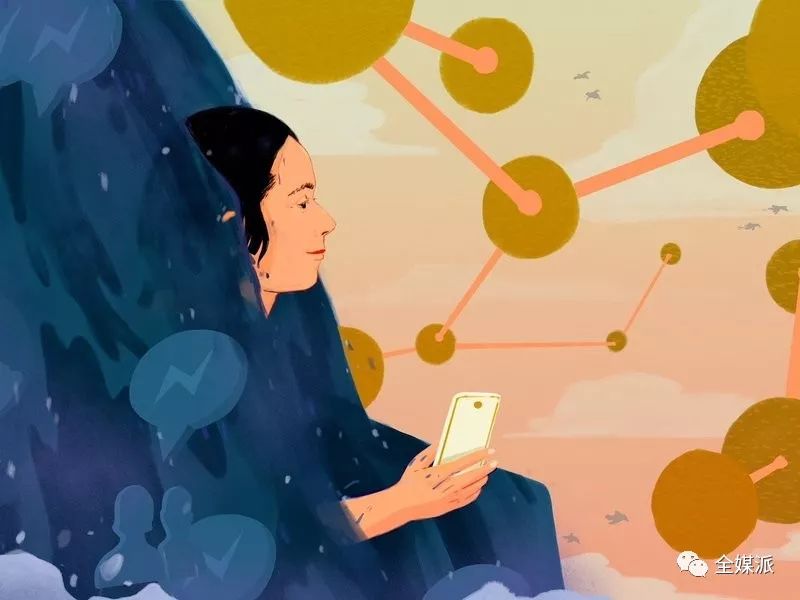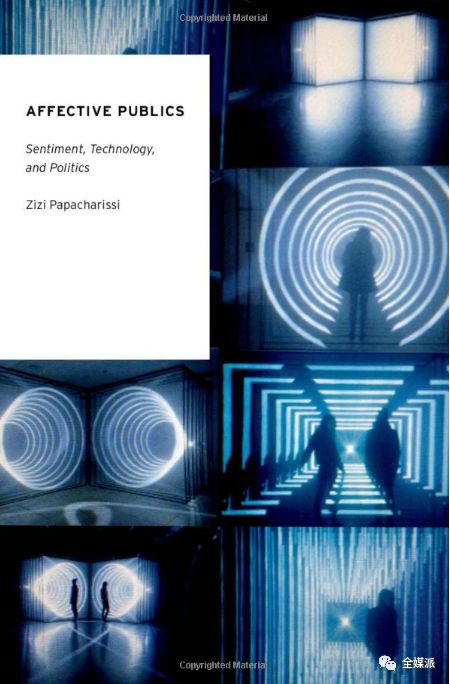The emotional intensity of fans is both a source of interest and a powerful counter-attack force.
Editor’s note: This article is from the micro-channel public number “ full media pie ” (ID: Quanmeipai), author Chang Jiang. Original title “ Associate Professor of Tsinghua University, Chang Jiang: Networking the public, from the collective emotions of fans to the label campaign”
Recently, the “Meal Girl” campaign has attracted great attention and provided a new perspective for observing and analyzing fan mobilization.
In the Past articles “From Fandom1.0 to 2.0: cultural change fans practices” , we explored the many characteristics of fan practice and the evolution of the food culture; this time, we continue to follow the collective sentiment in the fan culture: Internet Where does the collective emotion come from? How emotions are for the network Social mobilization injects energy? What role does technology play in it?
1 Why are fans angry?
Let’s first look at a case.
In March of this year, a famous American traffic “net red” was caught in the whirlpool of public opinion. The girl named Yovana Mendoza has 1.3 million followers on Twitter, YouTube and Instagram. Her popularity is due to her respect for the raw veganism lifestyle, which advocates no intake in the diet. Animal products, including eggs, milk, oil, while limiting the temperature at which the food is cooked. She named Rawvana for her personal brand and peddled recipes at great prices on major social platforms.
However, in a video uploaded by a fan, Mendoza was eating a plate of food while the careful fans found fish on the plate.
American famous vegetarian network Red Yovana Mendoza was photographed to eat fish
The image of the net red immediately collapsed. Deeply deceived fans are “washing” her social media accounts with a staggering posture. These angry fans call Mendoza “a snake on the tubing”, “terrorist”, “murderer”, and even “a big x”. At the same time, they created a new Twitter account “fish_rawvana” (rawvana for eating fish), as well as two popular tags “#FishGate” (eat fish gate) and “#FISHvana” to aggregate various sniper and satirical remarks.
In the United States, this public opinion event has evolved into a serious discussion of the vegetarian lifestyle, which has deepened into areas such as health, environmental protection, lifestyle, and politics.
In today’s technology environment, this thing seems to be nothing unusual. Things have passed for a while. When Mendoza explained that he had eaten meat because of his health problems, the fans did not pursue it. It was impossible to restore the previous “personal design”.
However, when we revisit this incident, there are some issues that require us to think systematically:
What kind of collective emotional state does “fans” have as a specific group? Why do today’s fans’ emotions look stronger than “previous” fans? What is the reason for this supposedly pure emotional venting, which may turn into a more serious social issue?
Of course, even if these questions are still unclear for a while, at least one thing is clear: the emotional problems in the Internet environment are not simple, and may even be “significant”. .
2 Technology Availability and Collective Emotions of Fans
As the Internet becomes more and more deeply involved in people’s daily lives, its mediating effect on emotions has received increasing attention.
In the past, many public opinion events around the world have confirmed this effect.
degree.
For this reason, the US stock market plummeted a few days ago, and President Trump specifically criticized the Fed and “new media” in his televised speech.
Criteria for the former to understand, what can be criticized for the latter?
The reason given by Trump is “inciting people’s uneasy feelings.”
However, if this kind of uneasiness is only “emotional”, how can Trump care this way?
How is the mediation effect of the Internet on emotions achieved? This problem has attracted the attention of many people in the past few years. One of the most interpretive perspectives is from the attributes of digital technology itself, which is called technological affordances.
In a nutshell, digital technology has a special effect on the cognition, attitude, emotion, and even behavior of people, because of certain natural characteristics. This effect is dominant in many times, ecologically. of. Based on our observations of current online public opinion events, social media has at least four resilience, replication, extension, and retrieval capabilities. This is how social media has shaped a new “network.” Reason for “networked public”.
It’s important to note that this “public” is not a concept in the traditional sense of the public, and we must understand the new paradigm if it is understood, otherwise it will fall into weakness.Moral critique. These four “compatibility” undoubtedly explain why today’s fan base is far more loyal and control-like for idols than the “pre-digital age”. Just as a fan of Zhang Yunlei said in an interview: “All the sounds, images and videos are there, constantly consolidating my memory and reminding me why I like him.”
For those idols who rely on digital traffic for their lives, the emotional strength of fans is both a source of interest and a powerful counter-attack force.
Due to the above availability of the Internet, Any moral jealousy and misconduct of idols will be instantly magnified and will remain in the information environment forever, so “personal setting” becomes a double-edged sword:
Owners can have a stable image coordinate system in the digital information ecology, fully mobilize the potential of technology availability to obtain emotional support; and once the person is broken, give the fans a collective emotional band It’s also a devastating blow, and it’s entirely possible to sue fan riots aimed at “digital elimination” of idols
.
3 Emotional public and social change
For obvious reasons, many studies have directed the analysis of technology availability to the study of online public opinion and group behavior, and affect is often seen as a very important cognition. Junction point.
That is to say, when people try to explain the social mobilization effectiveness of the Internet, they find that many of the sticking points are concentrated on people’s emotions.
Clare Hemmings believes that Internet mobilization of people is not achieved by resorting to reason or interest, but by creating “affective dissonance” and “affective solidarity” To achieve .
In a nutshell, in the Internet environment, various types of group awareness and even social movements are primarily achieved through the sharing and transmission of shared emotional experiences by users.. This mechanism may be more complicated than we think – it will even form a unique expression (vernacular), aesthetics (aesthetics), and even ideology.
Of course, the pattern of social change driven by technology availability and emotion does not necessarily lead to rationality or progress in the general sense, but it does reflect some of the problems in policy and institutions, especially with Issues related to marginal and vulnerable groups.
The most typical example is the European and American countries in recent years. The popular “hashtag movement”. This kind of sports is mainly based on the availability of the Twitter social platform. After a unified label is used to aggregate online topics and accumulate sufficient discourse power, it can turn to the offline and become a social movement with material form. For example, the “Ice Bucket Challenge” and “MeToo” familiar to Chinese netizens are all successful cases.
In these two cases, the extensive and in-depth participation of netizens naturally has the reason why the law of the fans works, but also because the tag provokes and even builds a kind of transcendence ( Translocal) The common emotional experience, if this common emotional experience can be radicalized under specific social conditions, then it is entirely possible to transform into a kind of offline, specific cultural politics.
This mechanism is the most thoroughly embodied in digital feminism and youth subculture
. Teresa Bücker, a German feminist social activist born in 1984, once said: “As a connection between growth and Internet creation, there is no difference between me and online and offline… There is no one hundred percent virtual life in the world, and there is no one hundred percent ‘real’ life.
In the field of communication studies, emotions have been a hot topic in recent years, which is largely driven by the endless stream of digital movements.
Affective Publics, published by American scholar Zizi Papacharissi in 2015, systematically theorizes this power of the Internet.
Simply put, the emotional public theory consists of three core propositions:
First,The public in the Internet age is primarily an emotional community; second,Internet, especially social media Technology availability is an important driving force for the formation of “emotional public”; third,Emotional sharing in the Internet environment is not limited to the inside of the group, but also with more ambitious The social context interacts with the institutional environment and thus has the potential for radicalization.
American scholar Zizi Papacharissi “Emotional Public”
This Deleuze-style theorization provides us with a powerful explanatory tool for understanding many specific events in the Internet ecosystem, such as traffic stars and fan culture, such as online populism.
In fact, the reason why the fan culture in the Internet environment is more active and even more aggressive than the “pre-Internet era” is that the root cause lies in the the Internet is emotionally The “mobilization” of fans makes it possible to have a movement pattern that entangles numbers and material forms.
So we can’t look at the fan culture itself in isolation, but interpret this culture in its association with a larger social context : In the existing social structure, institutional environment and development model, what factors interact with the common emotions of “fans”, and then “fans” are transformed into “emotional public” from the inside out.
More importantly, we may want toget used to see the process of social change from a more diverse value perspective, because in the traditional sense, “rational” and “progressive” may No longer has the ultimate explanatory power.
As postmodern theorists have emphasized, grand narratives such as “rationality” and “progress” may themselves be the product of the enlightenment self-alienation, and their existence hinders the true sense. The realization of “progress”. And the various digital labors of the emotional public in the Internet world have long been severely reviewed by political economics scholars.The object of view, because of love, ecstasy, anger or hatred, is a data source for profit control for high-tech companies that control technology.
Technology availability is a very important perspective for us to understand the Internet culture. It allows us to splicing various seemingly unrelated social factors from the attributes of technology itself to achieve complete cultural integrity. understanding. This kind of thinking with a medium ecological color is lacking in our traditional thinking habits. Its main purpose is to face up technology as an important, and sometimes dominant, social force, and try to inject the logic of technical analysis into social analysis .
In other words,If in the present, the madness of technology is the direct cause of group irrationality, then the profound analysis of the laws of technology itself becomes a Required.




